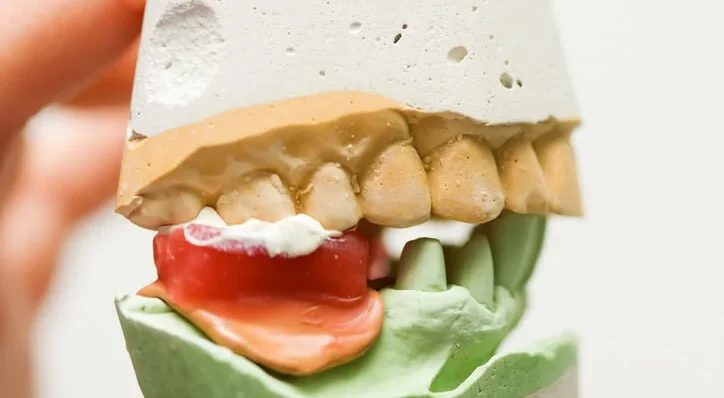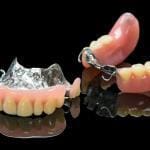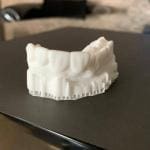In the realm of dentistry, precision and accuracy are paramount, especially when it comes to bite registration techniques. Bite registration, also known as interocclusal registration, is a crucial step in restorative and prosthodontic procedures where the accurate relationship between the upper and lower jaws needs to be recorded. Whether it’s for the fabrication of crowns, bridges, dentures, or orthodontic appliances, mastering bite registration techniques is essential for ensuring optimal treatment outcomes. In this comprehensive guide, we’ll delve into various methods, materials, and considerations involved in bite registration procedures.
Understanding the Importance of Bite Registration
Before delving into the techniques, it’s crucial to understand why bite registration holds such significance in dentistry. A precise bite registration serves as the foundation for restorative and prosthodontic treatments, enabling the dentist to replicate the patient’s occlusal relationship accurately. Any discrepancies or inaccuracies in the bite registration can lead to issues such as occlusal instability, premature wear of restorations, temporomandibular joint (TMJ) dysfunction, and patient discomfort.
Types of Bite Registration Techniques
- Direct Techniques
- Indirect Techniques
Direct Techniques
- Using Wax
- ZOE (Zinc Oxide Eugenol)
- Polyvinyl Siloxane (PVS)
Using Wax
Wax is one of the oldest and most traditional materials used for bite registration. It offers ease of manipulation and can be softened and molded to the desired occlusal relationship. However, its limitations include susceptibility to distortion from heat and pressure, making it less ideal for certain clinical situations.
ZOE (Zinc Oxide Eugenol)
ZOE paste mixed with a suitable thickening agent can also be utilized for direct bite registration. It offers good flow properties, making it easier to record accurate interocclusal relationships. However, its setting time can be relatively slow, and care must be taken to ensure proper mixing ratios to avoid inaccuracies.
Polyvinyl Siloxane (PVS)
PVS materials, commonly used for impression taking, can also serve as excellent bite registration materials. They offer high accuracy, excellent dimensional stability, and a fast setting time, making them preferred choices for many clinicians.
Indirect Techniques
- Using Bite Registration Trays
- Optical Scanning
Using Bite Registration Trays
Indirect techniques involve the use of pre-fabricated or custom-made trays filled with a suitable registration material. These trays are designed to accurately capture the patient’s occlusal relationship when they are brought into occlusion. Materials such as PVS, polyether, or acrylic resin can be used in conjunction with these trays.
Optical Scanning
With advancements in digital dentistry, optical scanning techniques are becoming increasingly popular for bite registration. Intraoral scanners can precisely capture the occlusal relationship in a digital format, eliminating the need for traditional impression materials.
Factors to Consider
Several factors should be taken into account when selecting the appropriate bite registration technique:
- Patient Factors
- Clinical Scenario
- Material Properties
- Operator Skill and Preference
Patient Factors
Considerations such as the patient’s occlusal condition, presence of restorations, and ability to cooperate during the procedure are essential.
Clinical Scenario
The specific restorative or prosthodontic treatment being performed will influence the choice of technique. For example, full-arch rehabilitation cases may require more sophisticated bite registration methods.
Material Properties
Understanding the characteristics of different bite registration materials, including setting time, flow properties, dimensional stability, and compatibility with other dental materials, is crucial for achieving accurate results.
Operator Skill and Preference
Dentists’ familiarity and proficiency with different techniques will also influence their choice.
Tips for Successful Bite Registration
To enhance the accuracy and efficacy of bite registration procedures, consider the following tips:
- Clear Communication
- Record Multiple Checkpoints
- Use Retractors and Occlusal Registration Aids
- Check Occlusal Clearance
- Evaluate Articulation
Clear Communication
Ensure clear communication with the patient regarding the procedure, emphasizing the importance of maintaining a relaxed and stable bite position.
Record Multiple Checkpoints
Record multiple occlusal checkpoints to capture the dynamic interplay between the upper and lower jaws accurately.
Use Retractors and Occlusal Registration Aids
Utilize cheek retractors and bite registration aids to achieve better visibility and stability during the procedure.
Check Occlusal Clearance
Verify adequate occlusal clearance to prevent interference with the registration material and ensure accurate recording of the occlusal relationship.
Evaluate Articulation
After recording the bite registration, verify the articulation to ensure proper alignment of the models and occlusal surfaces.
Advanced Techniques and Innovations
In addition to traditional methods, advancements in technology have introduced innovative techniques and tools to further refine the process of bite registration:
- Computer-Aided Design and Manufacturing (CAD/CAM)
- Virtual Articulators
- Dynamic Occlusal Analysis Systems
- Three-Dimensional Printing (3D Printing)
- Virtual Reality (VR) Simulations
Computer-Aided Design and Manufacturing (CAD/CAM)
CAD/CAM systems allow for the digital capture and manipulation of occlusal data, enabling precise bite registration without the need for physical impressions. Intraoral scanners coupled with CAD/CAM software offer unparalleled accuracy and efficiency in recording and transferring occlusal information.
Virtual Articulators
Virtual articulators simulate mandibular movements and occlusal relationships in a digital environment, allowing clinicians to analyze occlusal dynamics and plan treatment more comprehensively. These systems enable precise adjustment of occlusal parameters before fabricating restorations, leading to improved occlusal outcomes.
Dynamic Occlusal Analysis Systems
Dynamic occlusal analysis systems utilize sensors and software algorithms to analyze occlusal forces and distribution during functional movements. By assessing occlusal contacts in real-time, these systems provide valuable insights into occlusal discrepancies and aid in fine-tuning bite registrations for optimal occlusal harmony.
Three-Dimensional Printing (3D Printing)
3D printing technology has revolutionized the fabrication of bite registration aids and occlusal splints. Customized bite registration trays and occlusal splints can be rapidly produced from digital models, offering precise fit and improved patient comfort.
Virtual Reality (VR) Simulations
VR simulations provide immersive training environments for dental professionals to practice bite registration techniques in a realistic virtual setting. These simulations offer a safe and cost-effective platform for honing clinical skills and mastering complex occlusal concepts.
Challenges and Limitations
Despite the advancements in bite registration technology, several challenges and limitations persist:
- Cost
- Learning Curve
- Interference Factors
- Standardization
Cost
Implementing advanced bite registration systems and technologies may require significant financial investment, particularly for smaller dental practices or clinics with limited resources.
Learning Curve
Mastering advanced techniques such as CAD/CAM-based bite registration or virtual articulation may necessitate additional training and expertise, which could pose challenges for some clinicians.
Interference Factors
Intraoral conditions such as saliva, moisture, and soft tissue displacement can interfere with the accuracy of digital impressions and occlusal recordings, necessitating meticulous clinical protocols to mitigate these factors.
Standardization
Despite the growing adoption of digital bite registration systems, the lack of standardized protocols and interoperability between different software platforms remains a challenge, hindering seamless integration into clinical practice.
Future Directions
Looking ahead, the future of bite registration in dentistry is poised for further evolution and innovation:
- Artificial Intelligence (AI) Integration
- Biometric Sensors
- Telemedicine and Remote Monitoring
- Patient-Specific Solutions
Artificial Intelligence (AI) Integration
AI-powered algorithms may enhance the accuracy and efficiency of bite registration by automating occlusal analysis, identifying occlusal discrepancies, and optimizing occlusal parameters based on patient-specific data.
Biometric Sensors
Wearable biometric sensors capable of monitoring mandibular movements and occlusal forces in real-time may revolutionize bite registration by providing continuous feedback on occlusal dynamics and functional occlusion.
Telemedicine and Remote Monitoring
Telemedicine platforms equipped with intraoral cameras and digital occlusal analysis tools enable remote bite registration and occlusal assessment, expanding access to dental care and facilitating collaborative treatment planning.
Patient-Specific Solutions
Advancements in personalized medicine and biomaterials may lead to the development of patient-specific bite registration aids and occlusal appliances tailored to individual anatomical and functional needs.
Conclusion
Mastering bite registration techniques is indispensable for achieving successful outcomes in restorative and prosthodontic dentistry. By understanding the principles, types, and considerations involved in bite registration, dental professionals can enhance their clinical proficiency and deliver optimal care to their patients. Continuous education, training, and staying abreast of technological advancements in digital dentistry will further empower clinicians to navigate the complexities of bite registration with confidence and precision. Ultimately, a meticulous approach to bite registration lays the groundwork for superior restorations, improved patient satisfaction, and long-term oral health outcomes.





